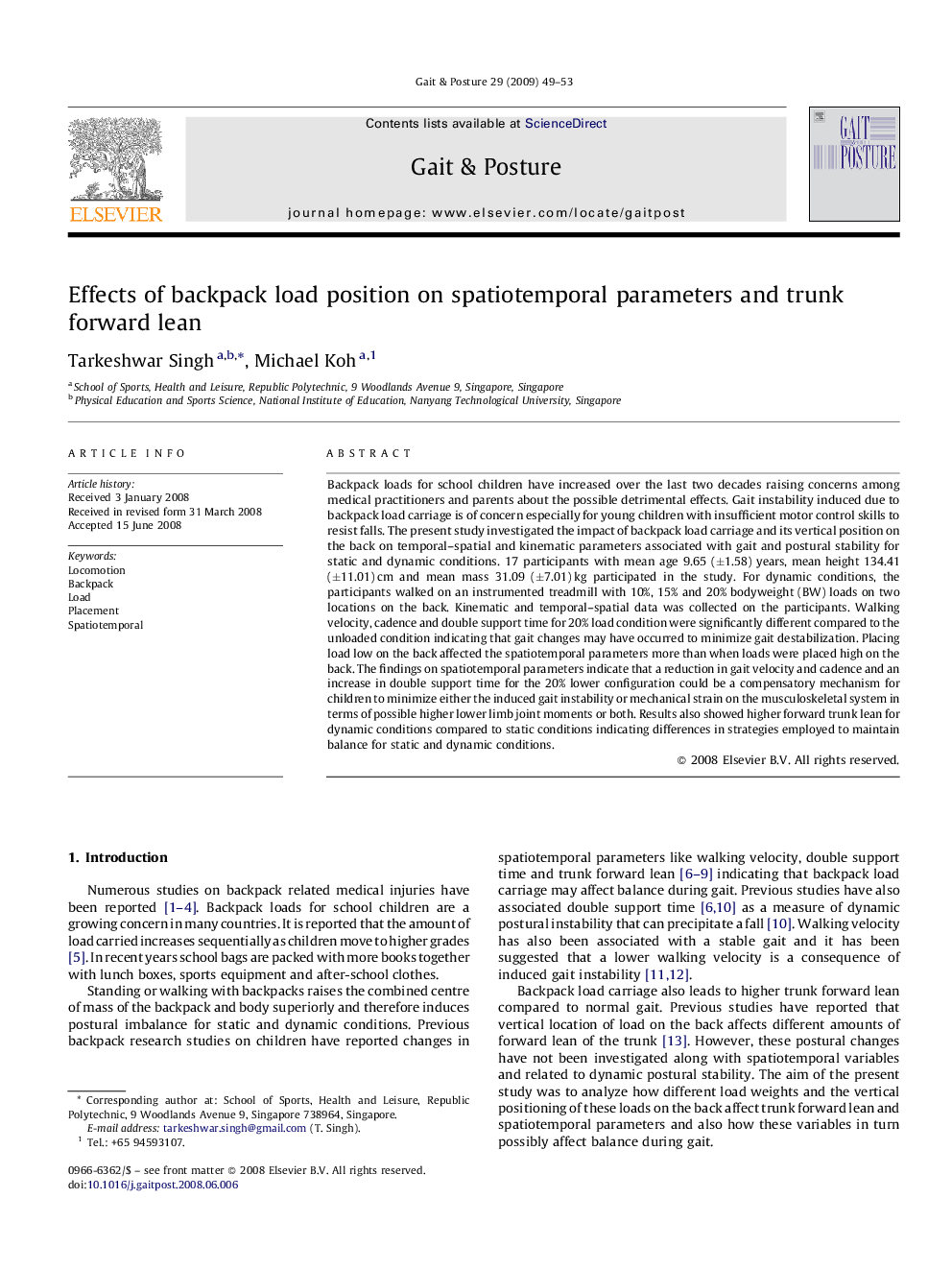| کد مقاله | کد نشریه | سال انتشار | مقاله انگلیسی | نسخه تمام متن |
|---|---|---|---|---|
| 4057953 | 1265705 | 2009 | 5 صفحه PDF | دانلود رایگان |

Backpack loads for school children have increased over the last two decades raising concerns among medical practitioners and parents about the possible detrimental effects. Gait instability induced due to backpack load carriage is of concern especially for young children with insufficient motor control skills to resist falls. The present study investigated the impact of backpack load carriage and its vertical position on the back on temporal–spatial and kinematic parameters associated with gait and postural stability for static and dynamic conditions. 17 participants with mean age 9.65 (±1.58) years, mean height 134.41 (±11.01) cm and mean mass 31.09 (±7.01) kg participated in the study. For dynamic conditions, the participants walked on an instrumented treadmill with 10%, 15% and 20% bodyweight (BW) loads on two locations on the back. Kinematic and temporal–spatial data was collected on the participants. Walking velocity, cadence and double support time for 20% load condition were significantly different compared to the unloaded condition indicating that gait changes may have occurred to minimize gait destabilization. Placing load low on the back affected the spatiotemporal parameters more than when loads were placed high on the back. The findings on spatiotemporal parameters indicate that a reduction in gait velocity and cadence and an increase in double support time for the 20% lower configuration could be a compensatory mechanism for children to minimize either the induced gait instability or mechanical strain on the musculoskeletal system in terms of possible higher lower limb joint moments or both. Results also showed higher forward trunk lean for dynamic conditions compared to static conditions indicating differences in strategies employed to maintain balance for static and dynamic conditions.
Journal: Gait & Posture - Volume 29, Issue 1, January 2009, Pages 49–53